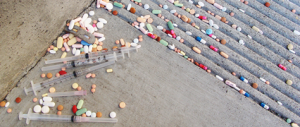Most pregnant women take a lot of precautions. They take vitamins, eat right, and research what products are safest for their babies. What they may not consider is that chemicals found in everything from sofas to plastic containers can also be harmful to not only their unborn children, but also to their young kids.
Chemicals used in the manufacture of consumer products are found across our environment, whether you live in the United States, Europe or China, and they’re affecting both our short term and long term health. They can cause developmental and behavioral problems, interrupt or alter hormones, and even change gene expression. After three decades studying neurotoxins and what they do to our developing brains, researchers are more insistent than ever that lawmakers monitor and limit how and when they’re used. If our leaders don’t listen, warn experts, we will fail to protect future generations from these powerful and harmful pollutants.
Leading that call to action are two US-based scientists who study chemicals and neurological development: Philip Landrigan of New York’s Mount Sinai School of Medicine and Philippe Grandjean of the Harvard School of Public Health. “Our very great concern is that children worldwide are being exposed to unrecognised toxic chemicals that are silently eroding intelligence, disrupting behaviors, truncating future achievements, and damaging societies,” they wrote in a paper published in the medical journal The Lancet Neurology earlier this year.
As it is, one in six children in the US suffers from some sort of developmental disorder – including autism, attention deficit disorder, or dyslexia – that evidence suggests are at least partly caused by industrial chemicals. In addition, up to 15% of babies suffer from neurodevelopmental disorders in the US.
Studying the evidence
In their most recent paper, Landrigan and Grandjean point to six chemicals that are harmful—especially to pregnant women and children—adding to five they listed in 2006. Among them are pesticides including DDT, flame retardants found in furniture and PCBs that are used in a variety of products ranging from electronics to plastics.
Concerns about chemicals in our environment and their impact on our health are not new. Nearly 17 years ago zoologist Theo Colborn, journalist Dianne Dumanoski, and biologist John Peterson Myers published a book titled Our Stolen Future. It detailed, for the first time, the effects of chemicals on our bodies.
Specifically the authors pointed to endocrine disruptors, or chemicals that can interfere with our hormonal systems and cause, according to the U.S. National Institutes of Health, "developmental, reproductive, neurological, and immune effects in both humans and wildlife." Even though we can’t see them, they’re in many everyday products from skin lotion to plastics.
Translating knowledge to action
Since that book, researchers have published studies, books, and articles deepening our knowledge of how unmitigated exposure can be dangerous. The Endocrine Society, an international organisation with 17,000 members ranging from doctors to educators who focus on illnesses associated with the hormonal system, published a statement in 2009 referencing 485 studies that show how our health is negatively affected by endocrine disruptors.
Just last September, two well respected organisations in the US, the American College of Obstetricians and Gynecologists and the American Society for Reproductive Medicine, published a statement saying how chemicals can damage those who are most vulnerable.
“The scientific evidence over the last 15 years shows that exposure to toxic environmental agents before conception and during pregnancy can have significant and long-lasting effects on reproductive health,” it stated.
To combat the known offenders, the US government, and some state governments, have enacted stricter laws to protect the public. The use of certain chemicals is now outlawed and others, such as a class of flame retardants, are being phased out. The UK has also proposed regulating endocrine disruptors. And as researchers publish more data on chemicals that could potentially affect development, like an endocrine disrupting plasticiser recently outlawed in baby bottles and plastic cups in the US, governments may be pressured into taking action.
How to take action
There are many more harmful chemicals still out there, Landrigan and Grandjean say. The ones they point to are widespread. But one of the problems with linking health and specific substances is that it’s difficult to separate out which chemical is affecting development; individuals are likely exposed to a number of them at a time. To address that, Frederica Perera, director of the Columbia University Medical Center in New York, is conducting long-term studies on how the overall environment, and what’s in it, may be affecting neurological development and the human genome. She and her team are even looking at brain imaging to see how chemicals may be affecting physical parts of the brain.
“In the past, we took a reductionist approach, a single exposure, a single effect. But now we think that pollution interacts with nutritional and social susceptibility factors. We’re making heroic attempts to measure these,” Perera told author Florence Williams in a recent article.
Unfortunately the majority of chemicals aren’t tested for their potential toxicity. That’s why Landrigan and Grandjean are advocating for an international screening mechanism on neurotoxicity. It could, they argue, test industrial chemicals so that those that are harmful could be restricted, coordinate and publish new research and promote better policy. More oversight, a comprehensive database, and continued research could go a long way toward protecting our health—and our children’s.







